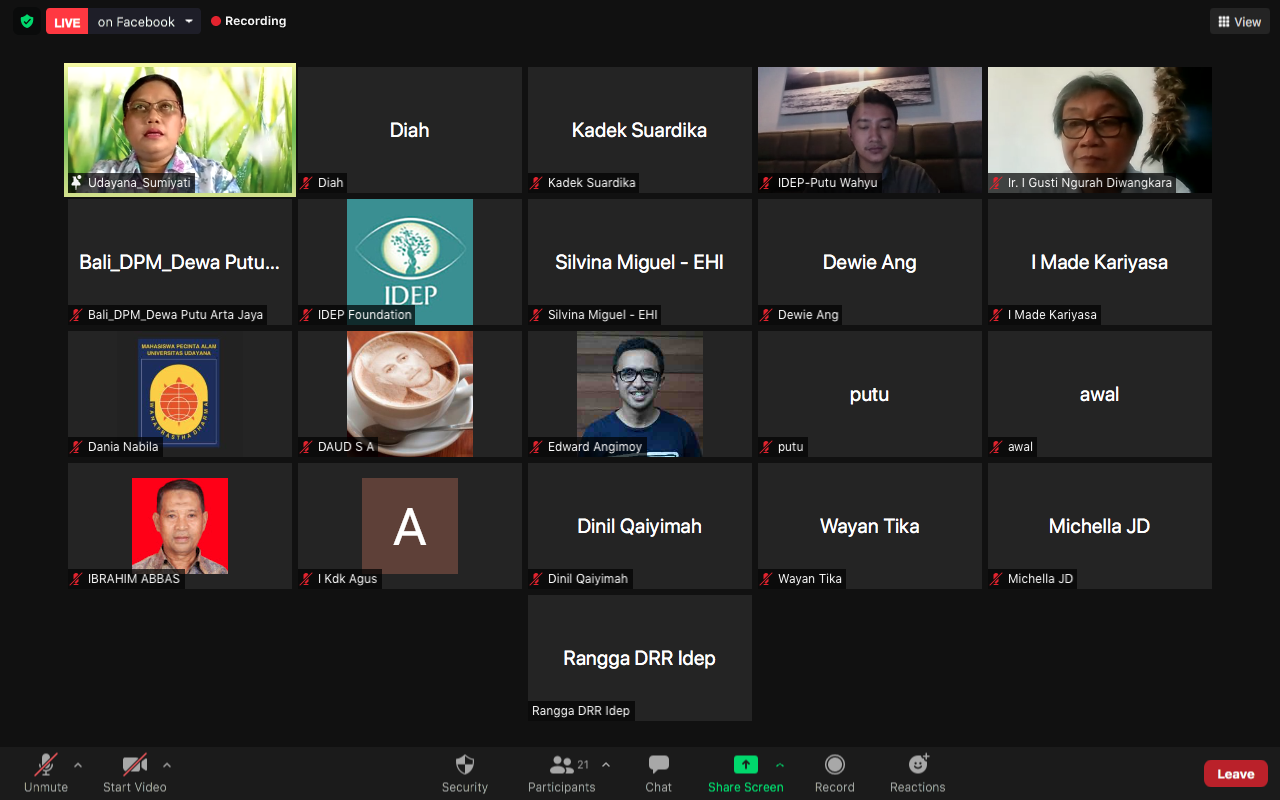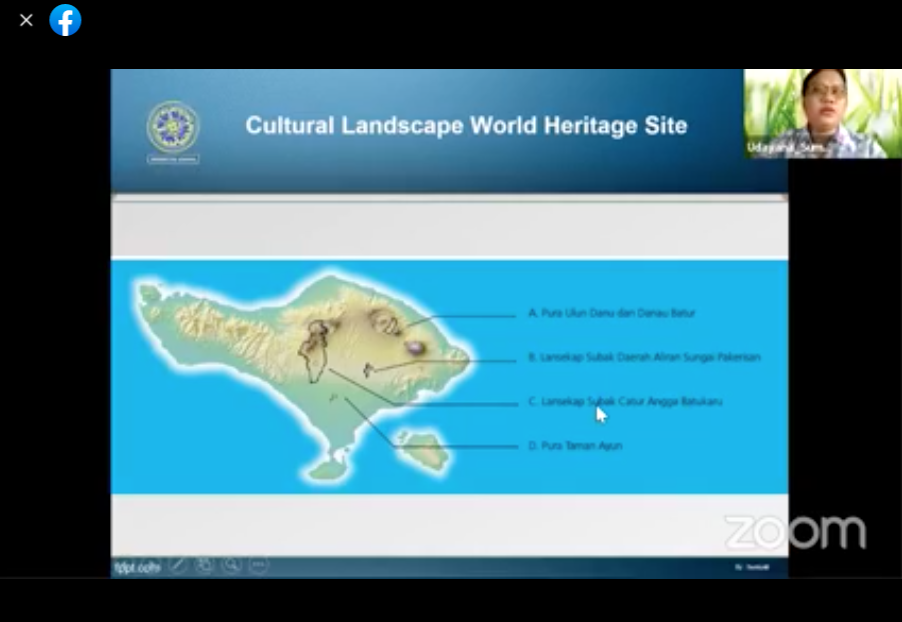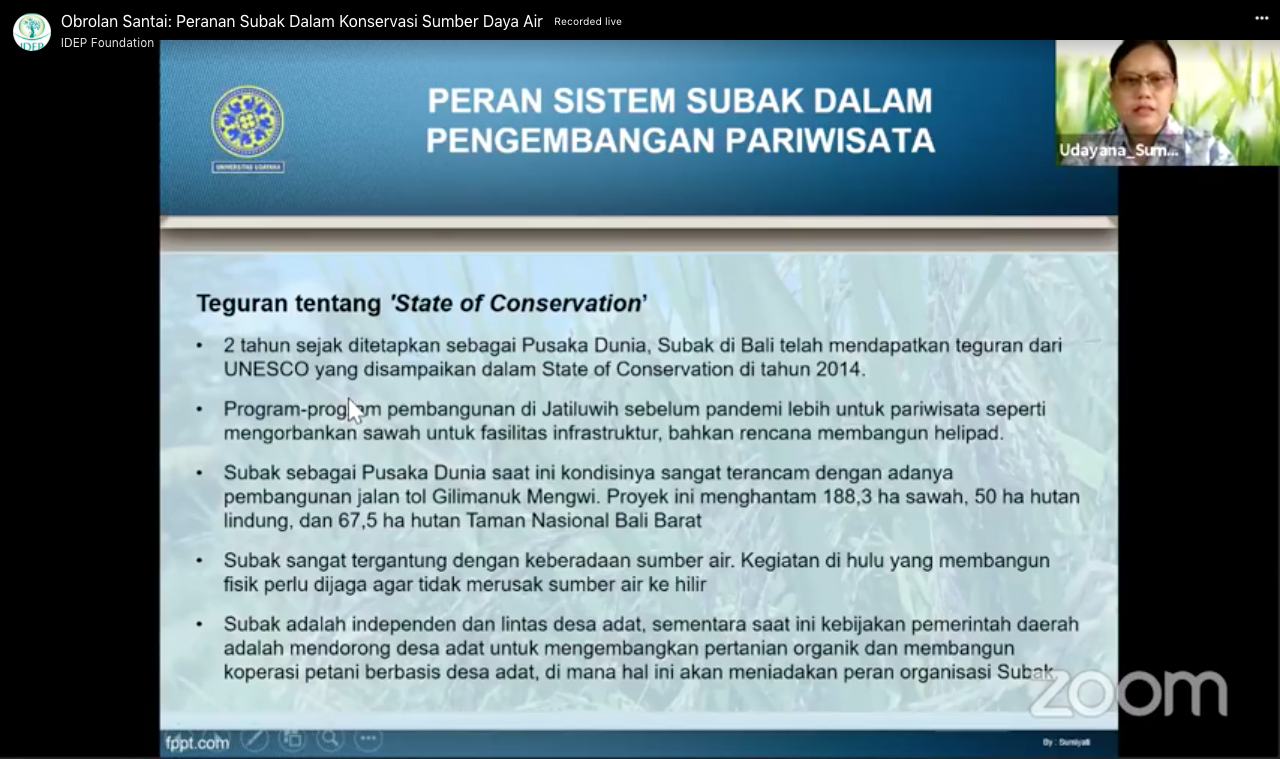The Fate of Subak in the Midst of the Water Resources Crisis
Every year Subak has been decreasing in line with the shrinking water resources in Bali. “After 2015, in my area [Subak Uma Lebah, Petulu Village] the water debit began to decrease and dry land increased by one hectare every year,” said Kadek Suardika in the Bali Water Protection’s webinar “The Role of Subak in Water Resources Conservation” on Friday, 27 August 2021.

Participants in Bali Water Protection’s webinar
This statement was also confirmed by Sumiyati, an academic from Udayana University. Based on her research, there had been disturbances in the upstream as water catchment areas, which impacted irrigation canals. The massive tourism accommodation industry, residential buildings, and drinking water companies in water catchment areas are the most significant disruption. “When the upstream is disturbed and cannot absorb water, the springs will also be disturbed. For example, the rainy season can flood and in the dry season will drought,” said the researcher who focused his study on Subak.

Subak as the world heritage by UNESCO
Water in Bali plays a vital role in the sustainability of agriculture and food. Furthermore, Subak also has an important role in its efforts to protect water resources. “Subak has a service [role] in the social environment and ecosystem,” said Sumiyati. She added that subak has a significant role as a water reservoir, where rice fields offer a layer of soil that quickly absorbs water into the aquifer layer. Then subak plays a role in filtering water into the ground because of the hydrological system of subak with its rocks. In addition to water, subak also functions in air and ecosystem conservation efforts. The system recorded in the inscription since the 11th century also plays a role in maintaining people’s food security.

Kadek Suardika tells about his experience in managing subak
“However, from year to year, we lose our food source because of the lack of water,” said Kadek, who was a Subak Pekaseh. Based on Kadek’s observations, until this year [2021], 10 hectares of land are no longer productive because there is no water flow there. Finally, the community converted their land to other things, such as renting or selling their land to build hotels.
Kadek saw that tourism and housing development impacted the water discharge, decreasing and not as good as before. Garbage in the river also contributes to this problem. Kadek also told about his experience, “After it [his land] rained, I tried to dig a field, but it turned out that the underground part had hardened so that water couldn’t get inside.”
Then he realized that soil is not healthy anymore, and it influences water absorption and subak itself. “Currently, the soil condition in Bali has begun to decline due to the use of pesticides and herbicides that destroy life in the soil,” explained the man who is currently active in the Emas Hitam Foundation with the Mari Berkebun movement.
Using chemicals in agriculture had an impact on soil conditions. Gradually the quality of the soil will decline and become unproductive so that it becomes dry and water is no longer appropriately absorbed. Even Subak, which has been included in one of the world heritage systems by UNESCO, has received several reprimands. Sumiati also received this report from the World Heritage Committee, including: 1) Development programs in Jatiluwih are more for tourism and sacrifice rice fields for infrastructure facilities; 2) Subak is in jeopardy due to the construction of the Gilimanuk Mengwi toll road, which hit 188.8 ha of rice fields, 50 ha of forest, and 67.5 ha of West Bali National Park forest; and 3) Activities upstream have damaged water sources downstream.

Reprimands from UNESCO about Subak condition in Bali
From these reprimands and Kadek Suardika’s experience in the field, it has become a big homework for all of us to maintain the sustainability of subak and water source itself. “Upstream areas as water catchment need to preserve so that water flow to subak can be optimal. Policyholders need to anticipate the land conversions, and they have an important role in stopping this massive activity,” concluded Sumiyati in this online discussion session.
Sumiyati’s research and Kadek Suardika’s experience show us an inseparable relation between land, water, and subak. They have an attachment that affects each other when one of them is supreme. It had impacts on the sustainability of nature and our life.(Gd)
Subscribe to IDEP Newsletters
Give a gift that will change lives. 100% funds charity projects.
|






